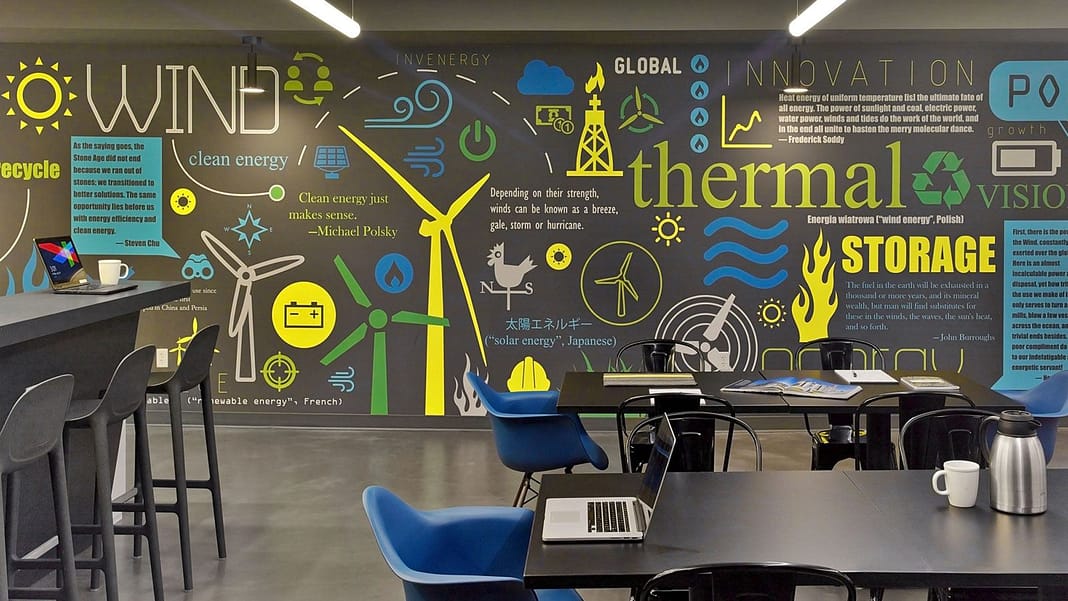By Rob Atkinson | Senior Project Manager
This is the second of a two-part post on achieving net zero carbon emissions and moving towards a climate positive status, when an organization’s activity actually removes carbon dioxide from the atmosphere. In Part 1 we considered the strategies and leadership needed to create a climate positive environment. Part 2 considers the actions required to realize net zero status.

Getting There
The pathway to becoming a climate positive organization is threefold: understand the size of your operational and infrastructure emissions; create and monitor sustainable actions designed to reach verified zero carbon goals in all business, suppliers, and customer interactions; and finally, identify effective partners to transition towards climate positive operations.
Reducing a company’s environmental impact starts with measuring and understanding its size. This is generally done through a carbon accounting process which will differ between businesses and across sectors because the complexity of an organization’s operations must be mapped to calculate its footprint. Emissions involved in running the company from heating the workplace to flying to conferences to manufacturing, transportation, and operations must be included. The emissions from these factors can be captured via a life cycle analysis (LCA). The annual emissions incurred per employee or business unit sets the total in terms of tons of carbon and is the annual offset goal. Companies that want to be climate positive and offset more than just their carbon footprint will need to involve their staff as well as business relationships.

Invenergy, Chicago. Photography © Eric Laignel.
Understanding Real-Time Carbon Emissions
Fortunately, the advancement in modelling tools allows for intelligent data collection via integrated surveys across a company’s business units, properties, and locations. Through automation that provides live updates, this data allows information on carbon emissions to be calculated in real time. Analysis is then performed to determine effective reduction strategies and identify best practice alternatives to those factors that are the most polluting. Companies can track their carbon use in real time and establish reduction strategy goals.
In Europe, the EU Climate Policy is already shifting towards analytical scenario modelling, with a recommended suite of models to record impact assessments that will determine their 2030 climate and energy policy framework. Standards and policies are bound to follow.
Companies can take action immediately to see effective reduction measures by reconciling their data modelling with certified carbon offset projects. These measures allow for a rapid pathway to achieving zero carbon solutions that can include switching to 100% renewable energy as technological innovations continue to be developed and refined. The Environmental Protection Agency recently teamed up with Fortune 500 to find out which major companies have gone the greenest. Among the top ten are Google LLC, reporting an annual 106% of electricity from solar and wind sources; Microsoft with 100% sourced from hydropower, solar, and wind; and Intel Corporation reporting 101% from various resources.
Infrastructure Considerations
The places where employee’s work and gather will reflect the organization’s drive towards a zero-carbon future. Operationally, for example, using power and heating from sustainable sources and recycling water are effective, non-landfill waste strategies. When commissioning new buildings it must be understood that operational carbon (the carbon released through the building process) accounts for nearly 40% of all energy-related CO2 emissions. Choosing carbon-neutral products (everything from carpets and ceilings to furniture) and carbon sequestering building materials (such as hempcrete, bamboo and cork) will be key, along with the use of circular economy leasing agreements that provide the opportunity to reuse components in the fit-out process to create value for the company and the environment. Those emissions that result from the company’s direct activities, such as fuel combustion from facilities and company-owned or controlled vehicles, should be included.
Supply Chain Strategies
A complete LCA will determine product emissions for the entire production supply chain from construction and materials to shipping. The focus should include a product’s life cycle outside the company’s direct operations, namely the supply chain of raw materials upstream of the company’s operational/manufacturing sites and the downstream processes such as waste generated through consumer use. Here businesses can leverage their relationships by working directly with suppliers and manufacturers to reduce emissions. During the last UN COP25 climate conference in Madrid, the global non-profit CDP reported that over a billion metric tons of emissions would be saved if just 125 multinational companies increased their renewable electricity by 20 percentage points. With only 4% of suppliers (292 companies) setting renewable energy targets, supply chain emissions are on average 5.5 times greater than operational emissions.
To take meaningful action companies must use their purchasing power to collaborate with supply chains. Thirty-one major buyers, including AB InBev, Accenture, BT Group, Signify and The LEGO Group, representing a combined spend of US$741.6 billion are now pressuring suppliers to move to renewables. Some of the largest buyers have already integrated environmental metrics, including CDP data, into their supplier relationship management and are transitioning to those suppliers that show environmental leadership. For 2020 the CDP has compiled an A list from the over 300 companies leading in sustainability. And within a 5 year period companies are reporting growth, for example L’Oreal grew 11% from 2018-2021 and Alphabet grew 9% in the last 2 years.

Confidential Tech Client, New York City. Photography © Eric Laignel.
Customer Focus
Businesses that use their marketing influence to shift consumer behavior toward lower-consumption and sustainable solutions are highly regarded. A company will be instrumental in helping customers to lower their carbon footprint by developing and supplying low-carbon products. According to a recent Futerra’s survey of over 1,000 consumers in the US and UK, 96% of participants felt their actions, such as donating, recycling, or buying ethically, could make a difference. Engaging consumers as active agents of the climate solution by producing products and encouraging behaviors that can reduce emissions is essential. For consumer-facing brands the emphasis needs to focus on products and packaging waste to ensure both can be reused or recycled to reduce emissions associated with landfill, which constitutes 17.4 percent of the all US anthropogenic methane emissions across all sectors.
Finding the Right Partnerships
Developing partnerships that enable movement towards a company’s climate-positive goals is the next important step of the transitional phase. Tangible goals help partners identify projects such as environmental conservation and reforestation to offset carbon emissions. Specialists like Earthly can source a range of companies that assist with finding nature-based solutions to offset carbon production, all backed by third party verification. No longer will companies be able to hide behind a slick greenwashing campaign without substance.
Earthly, for example, has worked with health and beauty brands and helped Garnier in their transition from plastic packaging by planting a tree for every product sold in stores across the UK, eventually planting 400,000 mangroves in Madagascar. This is Garnier’s first step in a major commitment to eliminate non-recycled plastic (virgin plastic) from its manufacturing process by 2025, when the packaging of all products will be recyclable, degradable or reusable, and all Garnier factories will be CO2 neutral.
Market leaders in Europe have established Supreme Audit Institutions (SAIs) that provides evidence-based insights on the achievement of climate change policies, often using scientific data presented by the IPCC and other research sources. The introduction by the EU of standardized data on environmental and social governance in 2024 is a big driver. Where they lead, large global auditing firms follow, with the big 4 (EY, Deloitte, KPMG and pwc) having now unveiled their own reporting standards that address issues ranging from emissions to pay and gender ratios. However, transitioning from a carbon neutral to a carbon positive company will require more effort than deferring responsibilities to a third party. Professionals who are equally knowledgeable about climate positive solutions and their relationship to the business should be the interface between a company and its partners.
To that end, the Institute of International Finance recommends appointing a chief sustainability officer (CSO) to take charge of all sustainability efforts, interpret changes in the external sustainability environment, and assemble a team to work out the strategic consequences for the firm. The CSO will also influence, communicate, and navigate organizational complexity to allow the company to deliver on ESG commitments. The team will monitor the progress of the company’s partners for each project and initiative to ensure credibility and effectiveness. Partners will need to provide transparency (either through photos or videos) that track their progress. This will create valuable material to share across internal staff communications as well as external marketing and social media.
Conclusion
Achieving net zero emissions is prerequisite for moving on to climate positive status. Unquestionably, it is a challenging and ambitious undertaking, yet only the gateway to realizing carbon negative, which is essential to securing the planet’s future. Difficult as it may be, there are design professionals and architects with the skills to help organizations achieve this goal, and at IA, we count ourselves among them. Partnering with clients to achieve zero emissions and move on to climate positive is high on our list of priorities for the wellbeing of our global community and the Earth.
In the fall, we’ll follow this post with a two-part series on becoming climate positive.

